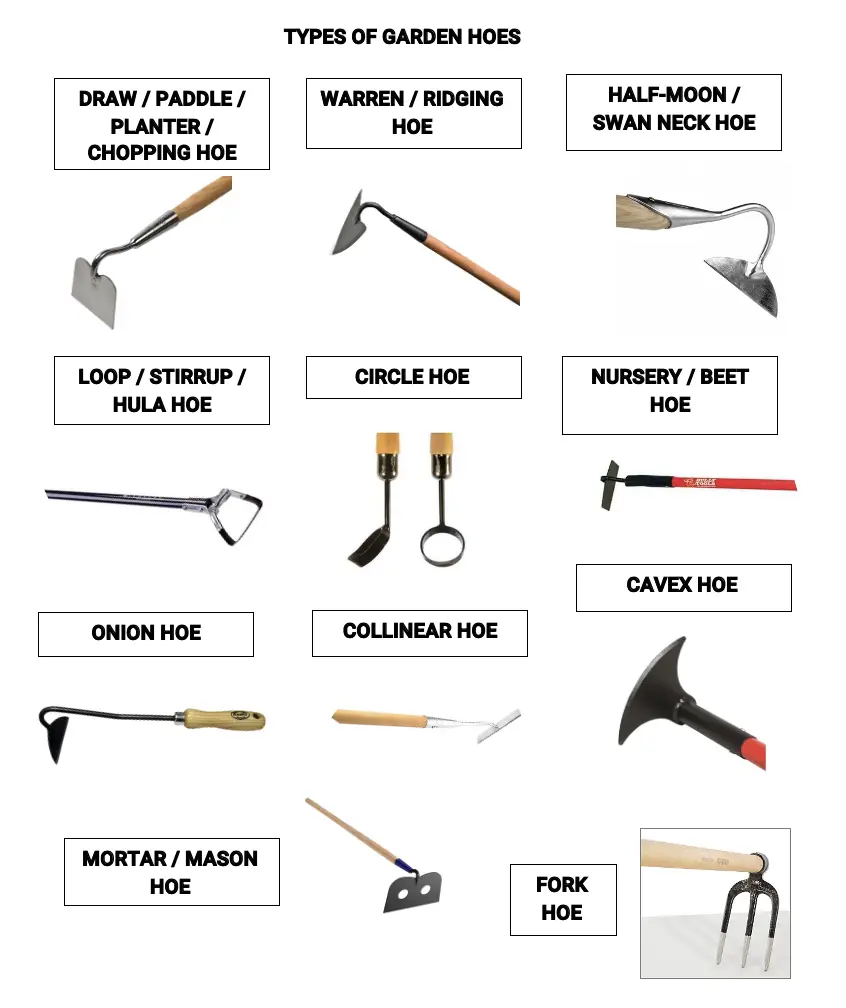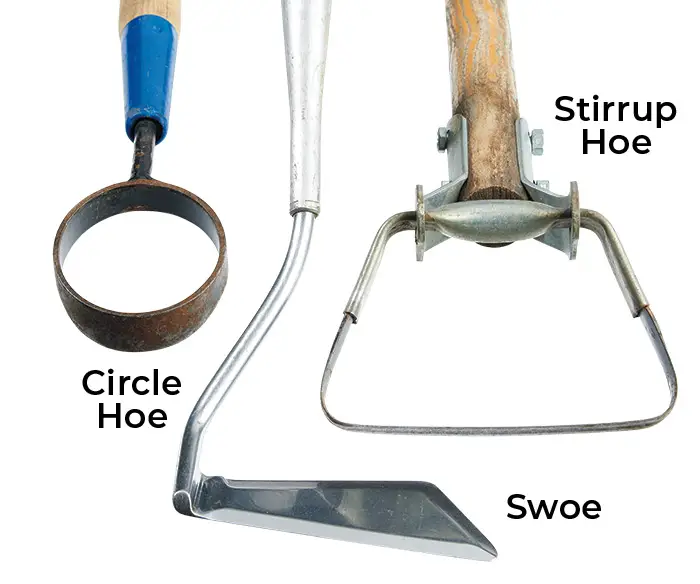This post may contain affiliate links which means I may receive a commission for purchases made through links. Learn more on my Private Policy page.
If you’re curious about the different types of hoes and how they can be used, you’ve come to the right place! From the classic garden hoe to the versatile scuffle hoe, each type has its own unique features and purposes. Whether you’re tending to your vegetable patch or maintaining your flower beds, understanding the various hoes and their functions will help you become a gardening pro in no time. Let’s dig in and uncover the secrets behind these indispensable tools!

This image is property of bullytools.com.
Types of Hoes
When it comes to gardening and landscaping, hoes are an essential tool for any enthusiast or professional. These versatile tools come in numerous shapes and sizes, each carefully designed for specific tasks. In this article, we will explore the various types of hoes and dive into how they are used.
Draw Hoe
The draw hoe is a classic and widely used tool in gardening. It features a rectangular-shaped metal blade attached to a long handle. This type of hoe is ideal for easily gliding through the soil, making it perfect for breaking up compacted dirt, removing weeds, and creating furrows for planting seeds. Its sharp edge allows for efficient cutting and cultivating, making it a valuable addition to any gardener’s arsenal.
Scuffle Hoe
If you are looking for a hoe that can quickly get rid of weeds and not disturb the surrounding plants, then the scuffle hoe is a fantastic choice. This hoe has a stirrup-shaped blade that works by sliding it back and forth just below the soil surface. The motion cuts the roots of weeds without bringing new weed seeds to the surface, providing efficient weed control. The scuffle hoe is particularly useful in tight spaces and densely planted areas.
Garden Hoe
The garden hoe is perhaps the most versatile type of hoe available. It consists of a flat, rectangular blade attached to a handle at a right angle, forming a “T” shape. This hoe is perfect for various gardening tasks, including preparing the soil, shaping beds, removing weeds, and cultivating the top layer of the soil. Its versatility and ease of use make the garden hoe a must-have for any gardener, from amateur to professional.
Hand Hoe
When it comes to precision weeding, nothing beats the hand hoe. As the name suggests, this is a smaller-sized hoe designed to be used with one hand. Its compact size and sharp blade make it ideal for removing weeds in tight spaces, between delicate plants, or in pots and containers. The hand hoe is a convenient tool for anyone who wants to keep their garden neat and weed-free without excessive bending or kneeling.
Warren Hoe
The warren hoe, also known as the hoe rake, is a unique tool that combines the features of a hoe and a rake. Its distinctive shape consists of several flat, prong-like blades attached to a handle, forming a fan shape. The warren hoe is primarily used for light cultivation, leveling soil, and smoothing out beds. Due to its broad coverage, it is an efficient tool for larger areas, such as flower beds and vegetable gardens.
Stirrup Hoe
The stirrup hoe, also known as the hula or shuffle hoe, is designed to tackle weeding tasks with ease. It features a looped blade that moves back and forth just below the soil surface, cutting weeds at their roots. The distinctive shape and motion of the stirrup hoe make it efficient in both forward and backward movements, making quick work of weed removal. Its versatility and adaptability are highly valued by gardeners of all levels.
Collinear Hoe
For those looking for precision cultivation and weeding in narrow rows or tight spaces, the collinear hoe is the tool of choice. This hoe has a long, narrow, and sharp blade that allows for precise movement, ensuring minimal damage to neighboring plants. The collinear hoe is excellent for working between rows of vegetables or ornamental plants, where space is limited and accuracy is crucial.
Action Hoe
The action hoe, also known as the action cultivator or oscillating hoe, is designed to make light work of cultivating and weeding. Its unique design features a double-edged blade that moves back and forth, cutting through weeds and loosening the soil simultaneously. This hoe is particularly efficient in larger areas, such as vegetable patches or open garden beds. The action hoe’s design ensures that gardeners can cover more ground in less time.
Dutch Hoe
The Dutch hoe, also called a push hoe, is a versatile tool designed for cultivating the soil and removing weeds. It consists of a sharp, slanting blade attached to a long handle. This type of hoe is highly effective in cutting through weed roots just below the surface of the soil, preventing regrowth. The Dutch hoe is fantastic for breaking up soil clumps, making seed drills, and general weeding in beds and borders.
Pavement Hoe
The pavement hoe, also known as a sidewalk hoe, is specifically designed for removing weeds and moss from driveways, sidewalks, and other paved surfaces. Its blade is typically made of metal or rubber, and it features a long handle for easy maneuverability. The pavement hoe is perfect for scraping and dislodging unwanted growth between cracks and crevices without damaging the underlying surface.
Conclusion
Whether you are an avid gardener or just starting to explore the world of horticulture, understanding the different types of hoes and their uses is essential. From the versatile garden hoe to the precise hand hoe, each type serves a specific purpose and can make your gardening tasks easier and more efficient. So, next time you step into the garden, don’t forget to grab the right hoe for the job and enjoy the satisfaction of maintaining a well-kept and flourishing outdoor space.

This image is property of images.ctfassets.net.
This post may contain affiliate links which means I may receive a commission for purchases made through links. Learn more on my Private Policy page.

